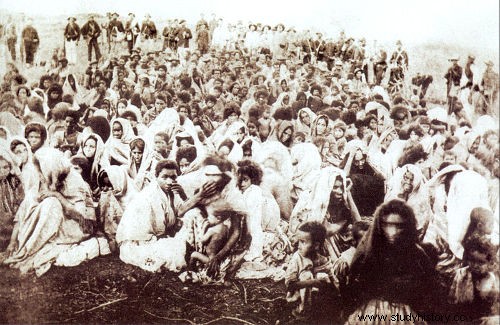
The War from Straws , which ran from November 7, 1896 to October 5, 1897, was one of the most emblematic events of the beginning of the period republican in Brazil. It takes its name because it was held in Arraial de Canudos , in the hinterland of Bahia – an autonomous community then led by the religious Antônio Advisor . The war, initially, exposed the reality of a Brazil with many faces and a newly installed republican state, seen by thousands of sertanejo religious as the incarnation of the “antichrist”, among other things.
Messianism in the Old Republic
To understand the War of Canudos, it is necessary to understand the phenomenon of messianism , which had a strong presence in Brazil at that time. Antônio Conselheiro, name adopted by the native of Ceará Antônio Vicente Mendes Maciel (1830-1897), he became a well-known figure in the sertões of Ceará, Bahia and other states, especially after the great drought of 1877, which devastated the Northeast. Conselheiro was imbued with readings of mystical characters from popular European Christianity and believed that the solution to the suffering of the people of the sertões lay in faith and in the struggle for autonomy. His figure came to represent a perspective of "salvation", of "redemption" for that miserable population, who saw him as a prophet endowed with "messianic" gifts, that is, who brought the promises of a new time, a new era. .
Autonomous organization and conflict
In a few years, a crowd of pilgrims began to surround the figure of Counselor, which ended up becoming a political-religious organization, parallel to the Republic and the Church. The first settlement of this organization was called Arraial de Bom Jesus (today, Crisópolis, Bahia), in the final years of the Empire. Even at that time (of the Empire) the first concerns about Conselheiro began, both on the part of the State and on the part of the Church. When, later on, there was the Proclamation of the Republic and the installation of the federative regime, Conselheiro had already organized the Arraial de Canudos , also in Bahia, which had around 25,000 people. The Arraial, which also had well-armed jagunços, came to be seen as an affront, as historian Boris Fausto observes, in his work História do Brasil :
The Counselor's preaching competed with the Church's; in a minor incident involving the cutting of wood, it led the governor of Bahia to the decision to teach the “fanatics” a lesson. Surprisingly, the Bahian force was defeated. The governor then appealed to federal troops. The defeat of two municipal expeditions with cannons and machine guns, in one of which their commander – Colonel Moreira César – died, provoked a wave of protests and violence in Rio de Janeiro. [1]
Destruction and death
To face Canudos, a federal expedition was needed (authorized by the then President of the Republic, Prudente from Morals ) with about 8,000 men, commanded by General Arthur Oscar . Such an expedition departed in August 1897 and the high point of the war took place between September and October. As the federal troops had better equipment, such as cannons and machine guns, the Arraial was gradually destroyed, and the entire population (including women, elderly and children) was massacred.
It is known that engineer and reporter Euclides da Cunha was sent to the scene of the conflict to produce an account of the confrontation. This story would become the work Os Sertões , published in 1902. In the final sections, Euclides narrates the moment when Antônio Conselheiro's corpse is found:
It lay in one of the huts attached to the trellis, and was found thanks to the indication of a prisoner. A brief layer of earth having been removed, the body of the “infamous and barbaric” agitator appeared on the sad shroud of a filthy sheet. He was hideous. Wrapped in the old blue American denim habit, hands clasped to his chest, face swollen, and gaunt, sunken eyes smelling of earth - those who had treated him most closely during his life hardly recognized him. [2]
The destruction of Canudos was not just a liquidation of huts and people, but also a symbol of threat to the newly constituted republican power. As Euclides closes his novel, this episode appears between “the madness and the crimes of nationalities...”.
NOTES
[1] FAUST, Boris. History of Brazil . EDUSP:São Paulo, 2013. pp. 221-21.
[2] CUNHA, Euclides da. Os Sertões. São Paulo:Três, 1984.
Take the opportunity to check out our video lesson related to the subject:
